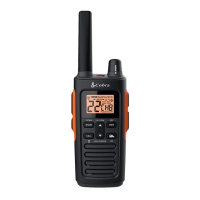
Do you have a question about the Cobra microTALK RX680 and is the answer not in the manual?
| Channels | 22 |
|---|---|
| Range | Up to 38 miles |
| Privacy Codes | 121 |
| Display | LCD |
| VOX | Yes |
| Hands-Free | Yes |
| Belt Clip | Yes |
| Keypad Lock | Yes |
| Call Alert | Yes |
| Vibrate Alert | Yes |
| Backlit Display | Yes |
| Battery Type | Rechargeable NiMH batteries |
| Weather Alerts | Yes, NOAA Weather Alerts |
| Frequency Range | FRS/GMRS |
| Weight | 0.3 lbs |
Explains the convenience and uses of the microTALK radio for various activities.
Describes how to use the belt clip for carrying the radio securely.
Provides contact information and procedures for obtaining warranty service and product support.
Provides critical advice on safe usage to prevent hearing damage and product damage.
Details the physical components and features of the radio through labeled diagrams.
Lists the various features and specifications of the microTALK radio.
Offers guidance on how to properly care for the radio to ensure longevity and performance.
Step-by-step instructions for installing and charging the radio's batteries.
Explains how to charge the radio and use the desktop charger.
Provides a concise guide for turning the radio on, selecting channels, and communicating.
Details the IP54 waterproof and dustproof rating and usage conditions.
Explains the basic steps to start using the radio, including communication.
Describes the low battery indicator and the auto-shutoff behavior.
Explains the automatic battery saving feature that conserves power when not in use.
Details the procedure for using the talk button to transmit voice messages.
Explains how to receive incoming transmissions by releasing the talk button.
Describes how to use the volume knob to adjust the listening level.
Explains how to use the call button to alert other users with a call tone.
Details how to activate and deactivate the LED flashlight and S.O.S. function.
Explains how auto squelch works and how to disable it for extended range.
Discusses factors affecting communication range and optimal conditions.
Explains conditions and channels that can reduce the radio's transmission range.
Describes how to navigate through various radio functions using the mode button.
Explains how to select radio channels, noting compatibility with other brands.
Introduces CTCSS and DCS privacy code systems to reduce interference.
Provides instructions for selecting CTCSS privacy codes for channels 1-22.
Details the process for selecting DCS privacy codes for channels 1-22.
Guides users on how to enable or disable the hands-free VOX transmission mode.
Explains how to adjust the VOX sensitivity level for optimal hands-free operation.
Instructs on selecting one of ten different call tones for alerts.
Explains how to enable or disable the audible confirmation tone upon releasing the talk button.
Describes how to toggle the audible beep that sounds when buttons are pressed.
Step-by-step guide to saving frequently used channels and privacy codes.
Instructions on how to access previously saved memory locations.
Explains how to activate channel scanning to find active transmissions.
Details actions to take while the radio is actively scanning and detects a signal.
Guides on how to scan through saved memory channels for activity.
Explains how to switch between high and low power transmit modes for communication range.
Instructions on how to tune into NOAA weather radio broadcasts.
Details how to enable or disable the weather alert function for automatic warnings.
Explains how to activate the emergency alert feature for signaling distress.
Lists frequencies, power output, and code systems for all 60 channels.
Provides essential safety guidelines for using the wireless handheld transceiver.
Details the warranty terms, coverage, and limitations for the product.


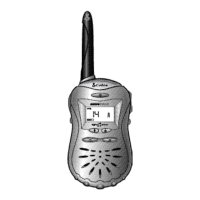

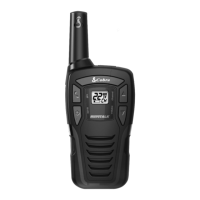
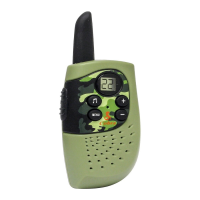
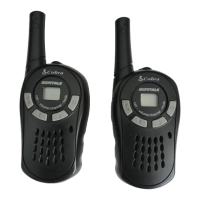




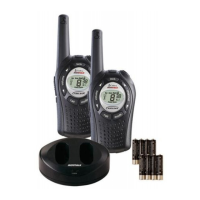
